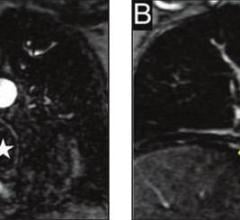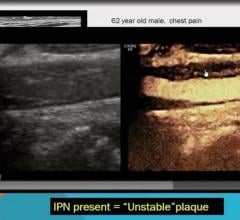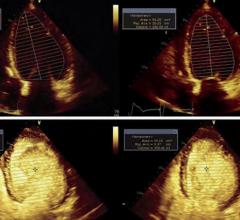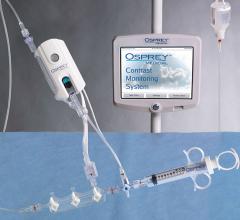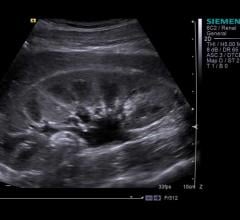
Novelists and playwrights might call it a cruel irony — heroes who succumb to the powers of evil, true love tragically divided or a good deed that results in suffering. A similarly unjust twist of fate occurs in the cardiologist’s world when, perhaps a day or two following a successful percutaneous intervention (PCI), the patient is afflicted with contrast-induced nephropathy (CIN), a rare adverse event in patients with healthy kidneys, but a potentially fatal outcome with an incidence rate of at least 16 percent among certain high-risk patients.
Concern is growing among physicians about how to protect patients from this biological disease in which renal injury is caused by the radiographic contrast agents used in many diagnostic and interventional procedures.
The rapid acceleration of advances in cardiac CT imaging technology as well as PCIs has had life-saving implications for thousands of patients, yet the cloud of CIN casts an ominous threat over procedures and studies designed for detection and treatment of cardiovascular disease. Approximately 60 million doses of iodinated contrast media are applied per year globally, which is required in the majority of examinations for accurate and safe diagnosis and interventional procedures, according to a paper published last February in Kidney International titled “Pathophysiology of Contrast Medium-Induced Nephropathy,” by Pontus Persson, et. al.
The number of cardiac CT exams and angiographic procedures continues to soar, and with them climbs the occurrence of CIN. While national U.S. statistics are nonexistent, it’s estimated that the overall incidence of CIN is 0.6 to 2.3 percent in the general population, but jumps as high as 20 to 40 percent in high-risk patients, according to Gilbert Deray, M.D. head of the Nephrology Department at La Pitié-Salpêtrière Hospital in Paris — and the number of those patients, he says, is ever-rising. (See sidebar on page 20 for risk factors.)
Craig Ball, senior director of Marketing at FlowMedica (Fremont, CA) says his company has witnessed the increased incidence of CIN in just the last three years.
“We’re seeing sicker and sicker patients coming through the cath lab as more technologies, such as drug-eluting stents, are being used to treat patients who would previously have gone to surgery — but these sicker patients are now receiving contrast media and being exposed to nephrotoxic dyes,” said Ball. “Doctors are also performing longer procedures on these patients, placing more stents to revascularize them. If physicians were not aware of [CIN] before, they are now. It is really coming up on their radar screens.”
It is the third common cause of hospital-acquired renal failure, and, among all procedures utilizing contrast media for diagnosis or therapeutic purposes, coronary angiography and PCIs are associated with the highest rates of CIN. The mortality rate is increased five-fold in patients with CIN, which typically occurs within 48 hours following the CM injection.
“[These] patients do worse — they have a longer stay in the hospital, they have an increase in hospital morbidity and mortality,” said Richard Solomon, M.D., professor of Medicine, University of Vermont, College of Medicine. “In the cardiac patients, they actually have a high one-year mortality compared to those patients who are matched in terms of all the risk factors for CIN — age, gender, how much contrast they received, baseline renal insufficiency, etc. — who did not develop this insult.”
Defining CIN
Clinically speaking, CIN is defined as an increase in serum creatinine (SCr) by 25 percent over baseline values; an increase in the same marker by more than 0.5 mg/dL is also used. Because creatinine is cleared exclusively by the kidney via glomerular filtration, elevated levels of creatinine in the bloodstream provide evidence of an alteration of glomerular filtration and is thus a red-flag signaling kidney dysfunction.
Loss of that filtration function, even temporarily, is caused by damage to the cells within the kidney. Because the kidney is an organ that can influence other tissues in the body, Dr. Solomon said, including stimulating inflammation and causing clots in other vessels, patients who develop CIN are also more likely to have heart attacks. And these are patients who, having just undergone a cardiovascular intervention, are very sick indeed to begin with.
Currently, an ounce of prevention is not only worth a pound of cure, it’s the only thing doctors have on their side to combat CIN.
“There is no leading-edge treatment — once you damage cells in the kidney, there is no way to make them undamaged,” said Dr. Solomon. “You just have to wait out till they recover on their own. Basically, those cells die, and new cells have to grow into where those cells were. That process takes a week or two.”
That is, if the patient can be kept alive long enough. A small percent of high-risk patients — perhaps five percent, says Dr. Solomon — may require some dialysis to take over the function of their kidneys, allowing them to remain healthy enough while their kidneys heal. Importantly, Dr. Solomon adds that attempts to rush patients to the dialysis unit immediately following cardiac catheterization in order to dialyze off the contrast dye are unsuccessful.
“It does not work,” he said. “The injury happens within minutes of the time the kidney sees the contrast. It usually takes an hour to get them to the dialysis room. We don’t recommend dialyzing patients.”
Prophylactic Measures
Hydration, preferably administered intravenously rather than orally, is the classically accepted prophylactic used for patients in whom pre-existing comorbidities are present. Dr. Deray in Paris asserts that, in fact, all patients should be hydrated. Those at risk for CIN should ideally receive either IV hydration with isotonic saline at the rate of 1 ml/kg/h for 12 hours both before and after the catheterization procedure or sodium bicarbonate for a shorter period of time, he said, citing Gregory Merten’s work published in the Journal of the American Medical Association in 2004.
Dr. Solomon concurs that use of sodium bicarbonate is effective, as well as readily accessible and inexpensive, and in the cardiac catheterization patient can be administered even one hour before contrast exposure.
But there’s work to be done even before implementing prophylactic measures, experts say. The very first step in preventing CIN in cardiac patients is determining kidney function (a.k.a. glomulerlar filtration rate), and this is accomplished by measuring SCr. Dr. Solomon adds that monitoring SCr for the few days following PCIs is critical as well, noting that “you have to look for the nephropathy — you have to get follow-up or else you won’t know who is in trouble.”
Additionally, says Dr. Deray, identification and treatment — when possible — of comorbid factors is an essential, preprocedural step.
Using the lowest volume of contrast media possible is advised, and some believe that low or iso-osmolality agents should be used in at-risk patients. For these patients, nephrologists also recommend a halt of potentially nephrotoxic drugs, when possible, as well as avoidance of diuretics or any medicine that causes the kidney to vasoconstrict or produce volume depletion. Dr. Deray adds that viscosity of the contrast agent — its resistance to sheer force or flow — is also a factor to be considered.
“Under normal conditions, tubular fluid is of lower viscosity than plasma, as the ultrafiltrate contains very few plasma proteins,” he said. “Resistance depends on fluid viscosity and not osmolality. Use of dimeric iso-osmolality [contrast] will increase tubular fluid viscosity and, therefore, the resistance to flow in the renal tubule. Such pressure will decrease renal medullary flow and decrease GFR.”
Antioxidants have been demonstrated to reduce the incidence of CIN in patients receiving abdominal CT, and their use by cardiologists have produced positive results, although Dr. Solomon concedes that some trials show benefits and others do not. Cheap, safe and without adverse side effects, N-acetylcysteine is an antioxidant that must be started the day before and continued on the day of the contrast injection — the taste, however, is unpleasant. A trial using high- dose Vitamin C, another antioxidant, indicated this may have benefits, too, according to Dr. Solomon.
“This is what we do for patients.” he said. “We expand them with volume, we don’t use vasodilators in the kidney because they haven’t shown a benefit in clinical trials and we try to give them an antioxidant. We also take away any medicine that has effects on the kidney that would potentially worsen the injury.”
Many therapies and prophylacitc strategies have been proposed and some studied in clinical investigations, but Dr. Solomon recommends a balance between use of data from clinical experiments and the practicalities that exist in the cardiac catheterization lab.
To this Dr. Deray adds a word of caution: Use of prophylactics, including N-acetylcysteine, should not lead clinicians to neglect hydration of their patients.
“Hydration,” he said, “is the cornerstone of the CIN prophylaxis.”



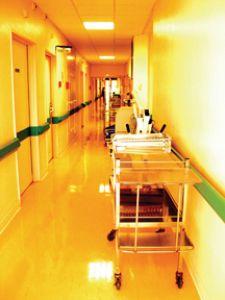
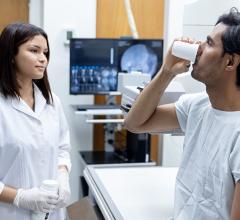
 August 17, 2023
August 17, 2023 
